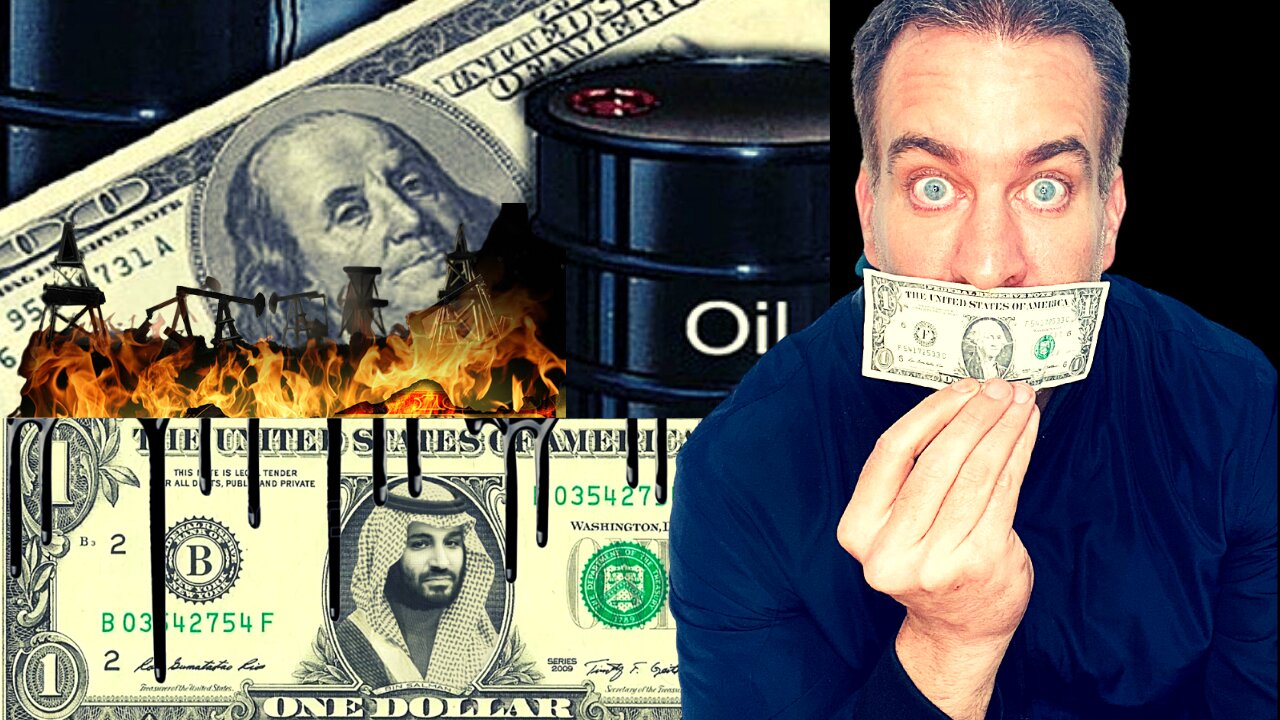Premium Only Content

GOODBYE PETRODOLLAR
Petrocurrency (or petrodollar) is a word used with three distinct meanings, often confused: Dollars paid to oil-producing nations (petrodollar recycling)—a term invented in the 1970s meaning trading surpluses of oil-producing nations.
*GET READY FOR DIGITAL CURRENCY!!!!!
Petrocurrency (or petrodollar) is a word used with three distinct meanings, often confused:
1. Dollars paid to oil-producing nations (petrodollar recycling)—a term invented in the 1970s meaning trading surpluses of oil-producing nations.
2. Currencies of oil-producing nations which tend to rise in value against other currencies when the price of oil rises (and fall when it falls).[2]
3. Pricing of oil in US dollars: currencies used as a unit of account to price oil in the international market.
"Petrocurrency" or (more commonly) "petrodollars" are popular shorthand for revenues from petroleum exports, mainly from the OPEC members plus Russia and Norway. Especially during periods of historically expensive oil, the associated financial flows can reach a scale of hundreds of billions of US dollar-equivalents per year – including a wide range of transactions in a variety of currencies, some pegged to the US dollar and some not.
The pound sterling has sometimes been regarded as a Petro currency as a result of North Sea oil exports.[6]
The Dutch guilder was once regarded as a petrocurrency due to its large quantities of natural gas and North Sea oil exports. The Dutch Guilder strengthened greatly in the 1970s after OPEC began a series of price hikes throughout the decade that consequently increased the value of all oil-producing nations' currencies. However, as a result of the appreciation of the Guilder, industrial manufacturing and services in the Netherlands during the 1970s and into the 1980s were crowded out of the larger national economy, and the country became increasingly non-competitive on world markets due to the high cost of Dutch industrial and service exports. This phenomenon is often referred to in economics literature as Dutch disease.
The Canadian dollar is increasingly viewed as a petrocurrency in the 21st Century.[citation needed] Generally speaking, as the price of oil rises, oil-related export revenues rise for an oil-exporting nation and thus constitute a larger monetary component of exports. Thus it has been for Canada. As their oil sands deposits have been increasingly exploited and sold on the international market, movements of the Canadian dollar have become increasingly correlated with the price of oil. For example, the exchange rate of Canadian dollars for the Japanese yen (99% of Japan's oil is imported) is 85% correlated with crude prices. As long as oil exports remain a strong component of Canada’s exports, oil prices will influence the value of the Canadian dollar.[according to whom?] If the share of oil and gas exports increases further, the link between oil prices and the exchange rate may become even stronger
As the world's dominant reserve currency the United States dollar has been a major currency for trading oil (sometimes the term 'Petrodollar' is mistakenly used to refer to this concept). In August 2018, Venezuela joined the group of countries that allow their oil to be purchased in currencies other than US Dollars, thus allowing purchases in Euros, Yuan, and other directly convertible currencies. Other nations that permit this include Iran
After WWII, international oil prices were for some time based on discounts or premiums relative to that for oil in the Gulf of Mexico.
After the Bretton Woods conference in the year 1944, the UK and its allies discontinued linking their currencies with gold; however, the US dollar continued to be pegged to gold, at $35 per ounce -- from 1941 to 1971
President Nixon canceled the fixed-rate convertibility of US dollars to gold in 1971. In the absence of fixed value convertibility to gold, compared to other currencies, the US dollar subsequently deteriorated in value for several years, making fixed USD to local currency exchange rates unsustainable for most countries.
Since the agreements of 1971 and 1973, OPEC oil is generally quoted in US dollars, sometimes referred to as petrodollars.
In October 1973, OPEC declared an oil embargo in response to the United States and Western Europe's support of Israel in the Yom Kippur War.
Since the beginning of 2003, Iran has required payment in euros for exports to Asia and Europe. The government opened an Iranian Oil Bourse on the free trade zone on the island of Kish, for the express purpose of trading oil priced in other currencies, including euros.
Be Creative and kind!
Connect on:
Instagram: https://www.instagram.com/themcclonebrothers/
Twitter: https://twitter.com/themcclonebrot1
LinkedIn: https://www.linkedin.com/in/themcclonebrothers/
-
 1:14:04
1:14:04
NONCONFORMING-CONFORMIST
1 year agoYOU HAVE TO PAY A LOT AND IN SO MANY WAYS TO TAKE PART IN THIS WORLD
542 -
 2:54
2:54
KGTV
3 years agoAtkinson Goodbye Kevin Childre
17 -
 4:42
4:42
MondoMetal
3 years agoNight Ranger Goodbye Live
38 -
 2:55:04
2:55:04
TimcastIRL
3 hours agoFBI & GOP EXPOSE "Coup" Against TRUMP, Democrat Operative FELONIES Covered Up | Timcast IRL
200K41 -

Man in America
11 hours ago5G + mRNA = Remote-Controlled Humanity w/ Dr. Henry Ealy
23K14 -

Geeks + Gamers
3 hours agoGEEKS + GAMERS PLAY- MARIO KART!! SWITCH 2 HYPE!
10.2K -
 1:37:44
1:37:44
Badlands Media
22 hours agoAltered State Ep. 30
53.3K5 -
 LIVE
LIVE
Meisters of Madness
7 hours agoElden Ring - Erdtree Wrap-up
247 watching -
 9:22:21
9:22:21
Bitcoin Magazine
2 days agoThe Bitcoin Conference 2025 | Day 2 Livestream
168K24 -
 LIVE
LIVE
Eternal_Spartan
1 hour agoLive - Eternal_Spartan | Doom: The Dark Ages | Come Join the Best Rumble Community There Is!!
273 watching